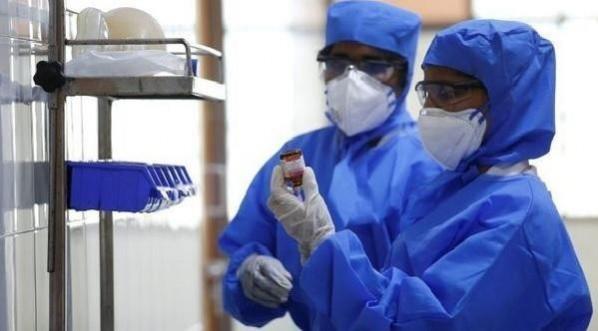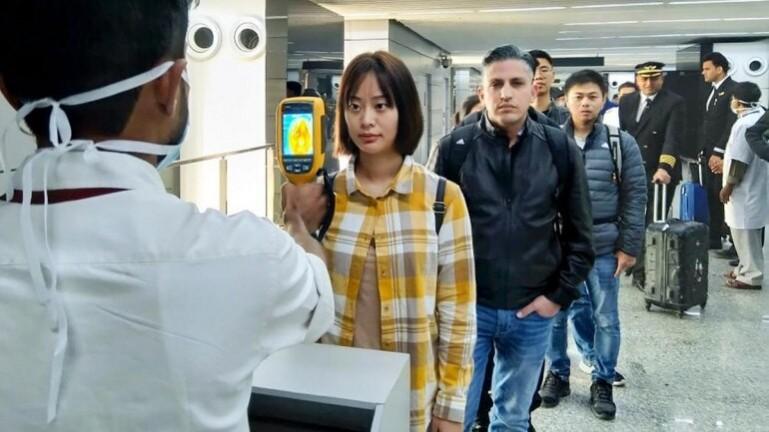Even as the cases of coronavirus has reached 29, India hasn't yet shared the genome sequence of the virus with the Global Initiative on Sharing All Influenza Data (GISAID).
However, countries like Nepal, Cambodia and Vietnam have already shared the virus genome sequence with the agency, according to a report in The Hindu.

Why sharing genome sequence is important?
Sharing of genome sequence provides a platform for scientists to study the virus and come up with assay to diagnose and control the disease. In the absence of genome sequence data of unknown pathogens, it takes a long time for scientists to collect information about the outbreak origins and transmission patterns through traditional methods.
With the advent of genome sequencing and other advanced technologies, scientists can now find out crucial information about pathogens more quickly.
In a report published by the Yale School of Public Health, Assistant Professor of Epidemiology (Microbial Diseases), Nathan Grubaugh said, "Virus genome sequencing is transforming epidemiological investigations, as we are seeing in real-time with the nCOV2019 outbreak.
Sequencing provides a platform to rapidly identify unknown or unexpected pathogens, identify the origins of an outbreak, and track transmission patterns. Much of this information would either remain unknown or take months to complete using traditional epidemiological or laboratory approaches."

In the current coronavirus outbreak scenario, the novel virus that now officially is called SARS-CoV-2, was unknown to us before it first came to light in December 2019 in China.
We had not encountered the virus before and knew very little about it. And as it spread from a city in China to all over the world, killing more than three thousand people and infecting over 98,000 people in just two months exhibited how deadly this virus is.
It was China's quick acknowledgement of the outbreak and publicize sharing of the genome sequence of the coronavirus with the international research community that provided the scientists to study the virus immediately.
Reading the data, scientists were able to quickly identify nCOV2019 as a novel coronavirus related to those previously found in bats.

"More importantly, with this information, the international community has been able to test and validate several diagnostic assays that could help identify patients with the virus more quickly. To go from unknown pathogen to diagnostic tests so quickly is incredible!," Nathan Grubaugh said in the report.
Knowing the sequence of the genome is important to find the origin and source of the virus. Tracing the origin gives an insight if the virus has undergone mutation and how dangerous it has become over the period.
No one is immune
But one thing is certain that no one is immune to the coronavirus.
Reminding this, World Health Organisation (WHO), on Wednesday, said that the new novel coronavirus is less infectious than flu but more deadly. It also said that no one is immune to the virus and more cases of the infection are expected.
By now, more than 70 countries have reported cases of coronavirus and the level of complexity of COVID-19 is different in different countries. Depending on the transmission scenario and the severity of the disease, measures to contain the virus are different in all the countries.
It took 20 months to map the genome sequence of SARS
To compare, it took scientists 20 months to discover the genome sequence of the virus during the 2003 Severe Acute Respiratory Syndrome (SARS) outbreak. By the time virus genome sequence was studied, the outbreak was under control.
How patients of coronavirus are being treated currently:
Since there is no vaccine yet, doctors are treating coronavirus patients on the basis of symptoms while their immune system fights off the virus.
In milder cases, patients can be given an intravenous drip, and prescribed medicines to relieve pain.
In severe cases, where viruses cause pneumonia and makes breathing difficult, patients may be put on a ventilator.
About one in four cases are thought to be severe.
How India's first coronavirus patient has been treated in Kerala?
The first coronavirus patient, though now discharged from the hospital but still under self-quarantine at home, was a medical student who had returned from Wuhan, China in January. The patient was diagnosed with COVID-19 on January 30.
According to reports, doctors at the hospital in Thrissur, Alappuzha and Kasargod districts treated the patient with supportive medicines like paracetamol and other treatments including counselling to reduce stress.
"The three patients in Kerala had very mild symptoms. So we gave them supportive medicines like paracetamol and others drugs related to their needs. This also includes medication for cold and cough," Dr Amar Fetle, who is in charge of the anti-nCoV task force in the state, told The print.
Could HIV Drugs be used as possible therapy:
While there's no effective medicine against coronavirus as of now, researchers are conducting tests to confirm if HIV drugs can be used as a possible therapy to treat COVID-19.
It had been noticed that some of the HIV drugs were shown to help fight the SARS virus in patients in 2003.
Considering that new coronavirus is 80 percent similar to the SARS virus, the hope is that HIV drug could be an effective treatment for COVID-19.
Here in India, though hospitals are not allowed to use HIV drugs to treat coronavirus patient, the Drug Controller General of India has approved "restricted use" of anti-HIV drugs along with with other medicines to be used as a possible therapy against coronavirus in China.
Search for vaccine for new coronavirus
The scientists' community around the world are searching for an effective vaccine for coronavirus but according to experts, it could take a year or a two.
For any vaccines to be called effective, it first needs to be safe to animals and then approved by the WHO before being given to anyone.
How difficult it is to find an effective vaccine can be gauged by the fact that despite years of research into SARS and MERS-which appeared in 2003 and 2012 respectively-there is no vaccines for them.














